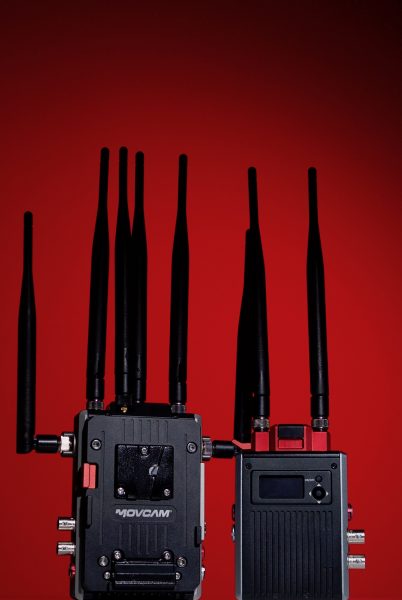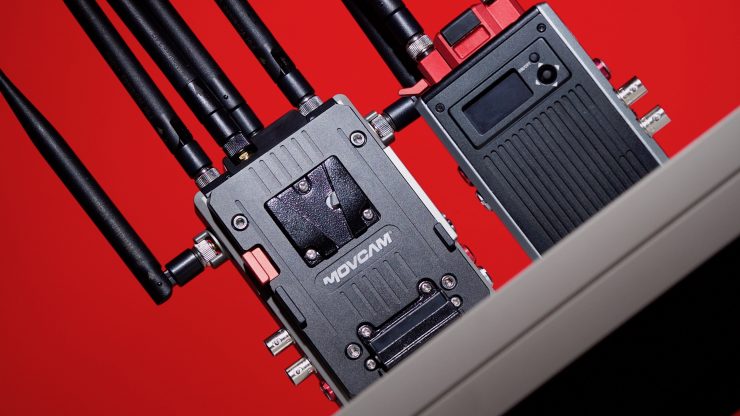
Movcam’s DarkTower sounds like it came directly out of the fires of Mordor, but it’s actually a very clever multi-dimensional wireless transmission system. DarkTower has been in the works for quite some time, but finally, it is here.
So what exactly is DarkTower?
To sum it up, DarkTower is a clever way of integrating wireless video, lens and camera control all in one device. The whole concept behind DarkTower is to do away with cables and multiple wireless devices to simplify and minimize the equipment you need. It makes perfect sense, do away with multiple wireless receivers and integrate them all into one module. The fewer devices you need to power, mount and hook cables up to, the better.
DarkTower is cross camera compatible and highly integrated. The expansion modules that make up the DarkTower system have been built and designed to be reliable, compact and functional. The DarkTower system was developed in conjunction with Kinefinity.
Key features
- Patented drop-in card design, simplifies the connection while increases reliability;
- Three built-in wireless functions: video transmission, follow focusing and camera control;
- Zero delay video transmission, 2000 feet, and 3000 feet options;
- FIZ function for precise operation;
- Wireless Control on most mainstream cameras and data setting;
- Supportive of wireless transmission of Metadata, precise time coding, and trigger.
- Supportive of lens data transmission, and user-defined lens data setting;
- Advanced built-in power management system supporting hot swap function
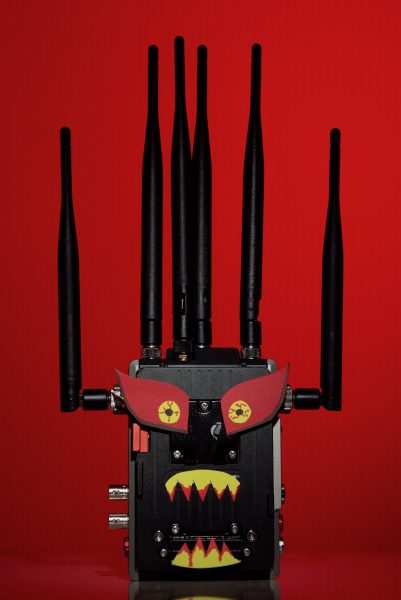
Drop-in Card
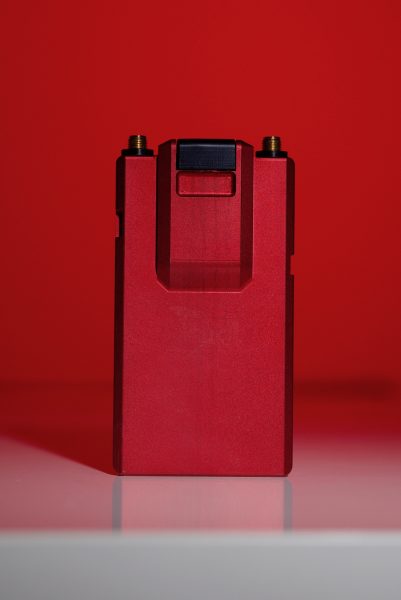
The expansion modules that makeup DarkTower use a patented drop-in card design in which all wireless control solutions are built into. The bottom of the card uses a highly reliable interface similar to SATA. This card offers wireless functions including wireless camera control, FIZ lens control and wireless video transmission. It greatly simplifies the connection between the camera and its accessories and improves reliability and durability.
The DarkTower platform consists of one back with dock, one wireless transmission card (TX card) and one wireless receiver (RX). The TX card can be used with any camera back based on the DarkTower platform.
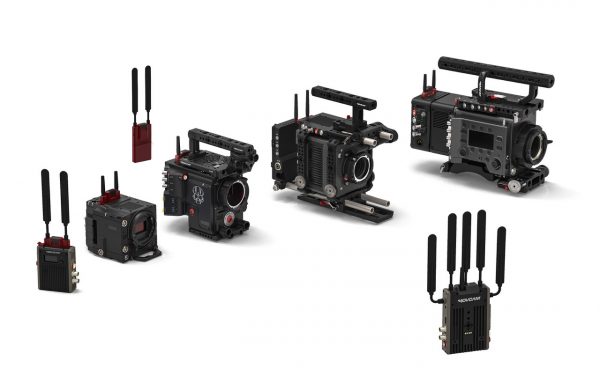
Movcam will also be providing camera backs with this dock to go with different mainstream cameras. They have developed systems for the Sony VENICE, ARRI ALEXA MINI, and RED cameras. The Sony VENICE and ARRI ALEXA MINI versions are already available.
As far as I am aware, they are still working with these companies to implement the various protocols required for camera control and wireless transmission.
Since the DarkTower wireless transmitter card integrates a 2.4 GHz lens control/wireless focus receiver, the wireless image transmission system can seamlessly interface with Movcam’s latest wireless focus system. The MBus terminal can output power and control signals to the lens motors. This eliminates the need for a receiving box, additional power cords, and other accessories. This is DarkTower’s biggest strength, doing away with multiple wireless systems and incorporating them into one device. Movcam’s latest wireless follow-focus system motors use daisy-chain motors, so even single-channel motors can easily scale to dual and triple channels.
You do need to be aware that DarkTower FIZ control only works with Movcam systems. It is not compatible with FIZ systems from other manufacturers. This is the catch 22 with proprietary technology. Unless you are using other Movcam products with DarkTower, you are limited to sending wireless video, camera control and control of servo zooms such as the Fujinon Cabrio series.
DarkTower and Kinefinity
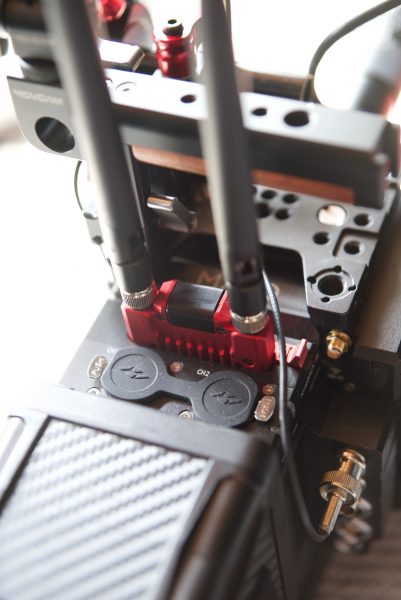
As DarkTower was co-developed between Movcam and Kinefinity, it is no surprise that Kinefinity cameras have a big advantage when using the system. If you use a KineBACK-W with a Kinefinity camera there is already a drop in slot where you can place a DarkTower TX card. This means there is no need to have to power it, and no need for hooking up any cables.
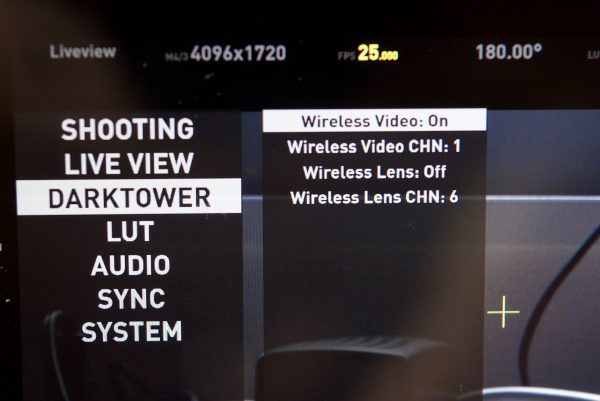
You just drop the TX card into the KineBACK-W and then bring up a menu on the Kinefinity camera to make changes to DarkTower. I found this a really refreshing design approach and it was really nice to have integrated wireless video right inside the camera. The beauty of it using a drop in TX card is I could then take it out, put it inside another module and use it with a completely different camera. It’s this flexibility that makes DarkTower quite unique.
Build quality
Both the DarkTower transmitter and receiver are solidly constructed. There is no plastic or rubber to be seen. The transmitter and receiver are encased in aluminum alloy. All the connectors and buttons are well made and feel very robust.
The only complaint I have is that the transmitter has lots of vents and doesn’t look to have any sort of weather sealing. I don’t think you could use the transmitter in the rain unless you were protecting it with some sort of cover.
Size and weight
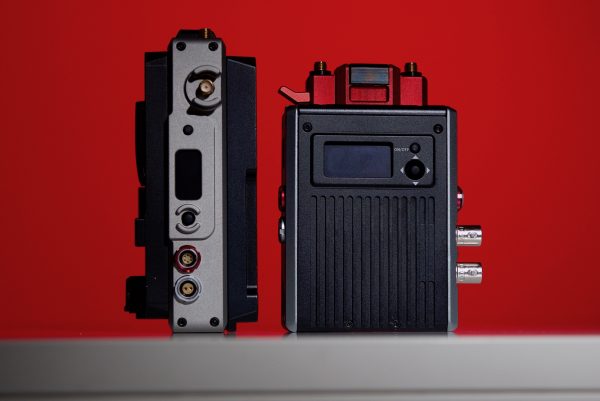
Both the DT2000 transmitter and receiver are quite compact considering they have such a long range (2000ft). The transmitter with TX card inside is 12cm (4.72″) x 7.55cm (2.97″) x 3cm (1.18″) L/W/D. The receiver that features a built-in V-lock battery plate on one side and a v-lock mounting plate on the other is 13.5cm (5.31″) x 9cm (3.54″) x 5.5cm (2.16″) L/W/D.
The DT2000 transmitter tips the scales at 370g (13.05oz), and the receiver weighs in at 725g (25.57oz). The actual TX card is feather light at 120g (4.23oz).
Powering options
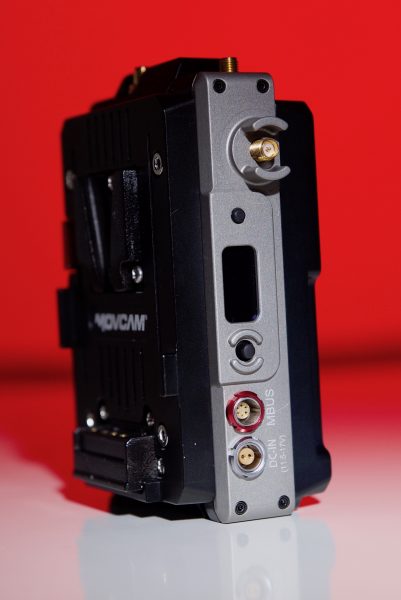
The transmitter unit can be powered via a 2-pin Lemo connector or the MBUS. For this review, I was using an MBUS to D-tap cable. The receiver can be powered via a built-in V-lock battery plate or through an 11.5-17v 2-pin DC Lemo input. If you are using a camera module such as the one found in the Kinefinity KineBACK-W there is no need to power the TX card externally.
Inputs/outputs
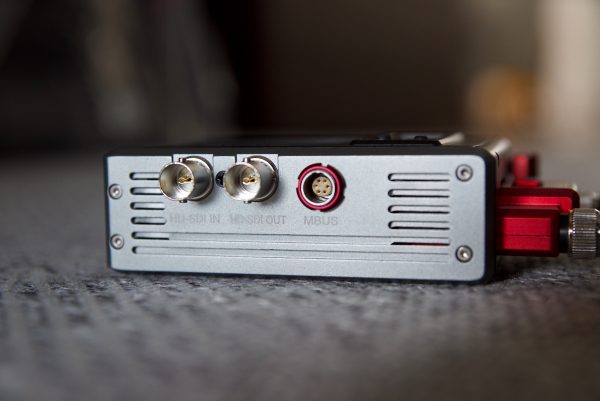
The DT2000 transmitter has a single SDI In and a single SDI Out. There is no HDMI In.
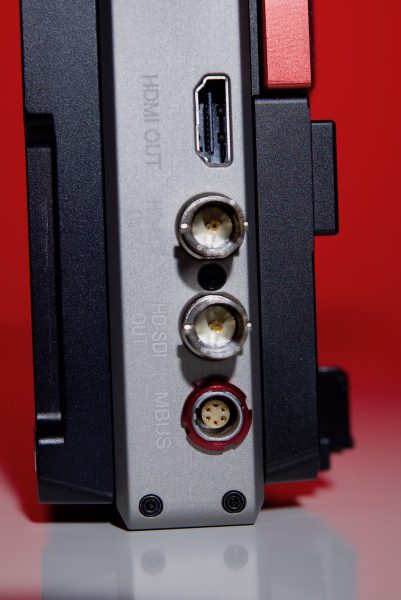
The receiver unit has two SDI outputs as well as an HDMI out. The receiver can output over SDI and HDMI at the same time.
Frequency band, encryption, and latency
The DarkTower wireless transmitter card integrates 5.8 GHz wireless image transmission and 2.4 GHz lens control/wireless focus transmission and reception. Movcam claims that zero-delay (<1ms) lossless transmission of 1080p60fps is possible. I don’t think any wireless video system can say that it is 100% latency free, but if there is any on the DarkTower system I couldn’t notice it. As far as encryption is concerned the TX-box generates pin numbers randomly, which only the pairing RX can receive.
Mounting points and options
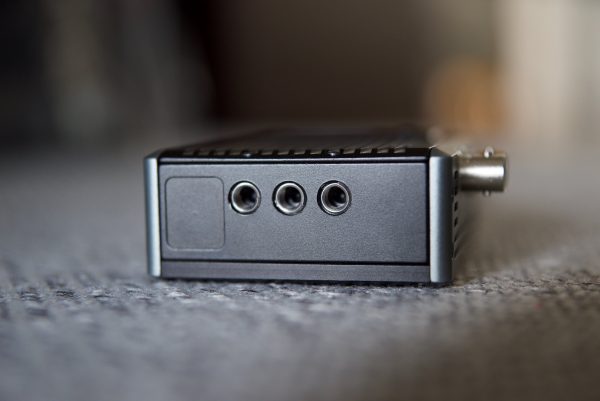
The transmitter has three 1/4-20″ mounting holes on the bottom of the unit. If you are using just the TX card then, of course, you don’t need to worry about any mounting, it just slides straight inside a module.
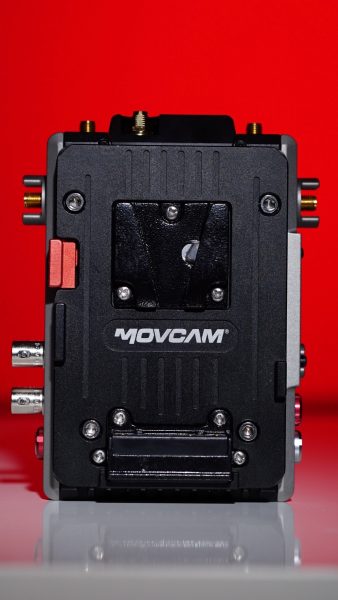
The receiver has a built-in V-lock mounting plate so you could mount it directly onto a monitor that had a V-lock battery plate.
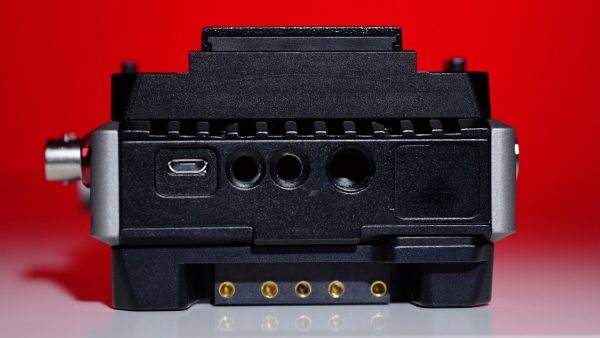
On the bottom of the unit, there are two 1/4 20″ and one 3/8″ mounting holes.
Antennas
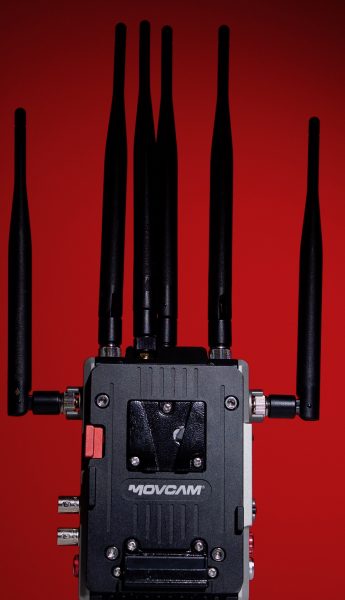
Both the transmitter and receiver give you the option to use either internal or external antennas. If you use the external antennas, the transmitter has two and the receiver has six. The external antennas have a hinge mechanism so they can be moved and positioned in any direction you need.
They aren’t as flexible as the sword style aerials that are on the Vaxis products and I did find that they tended to come loose quite often. You really do need to make sure they are all screwed in tightly to prevent this from happening.
The aerials on the receiver also end up spreading out in multiple directions which does make the product’s footprint quite large.
Display screen
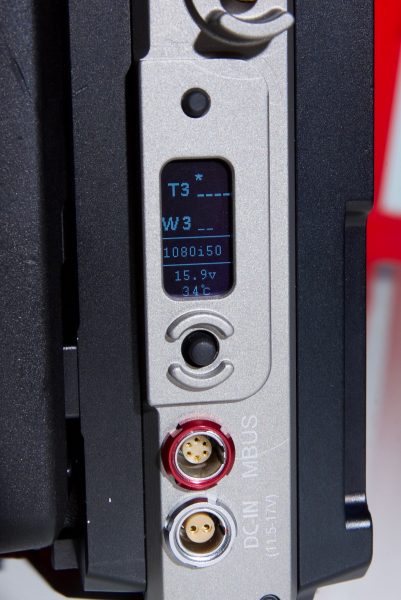
Both the transmitter and receiver feature easy to read LCD displays that give you concise and clear information about the status of your DarkTower system.
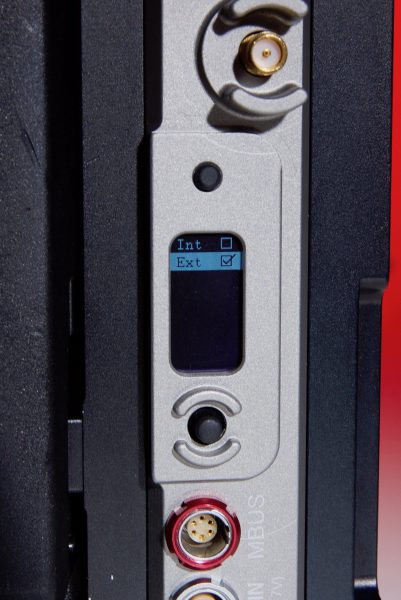
The menu system is straightforward and simple to use. There is no need to make setting up a wireless system difficult and confusing. It should be as simple as possible so you can get on with filming.
Built-in fan
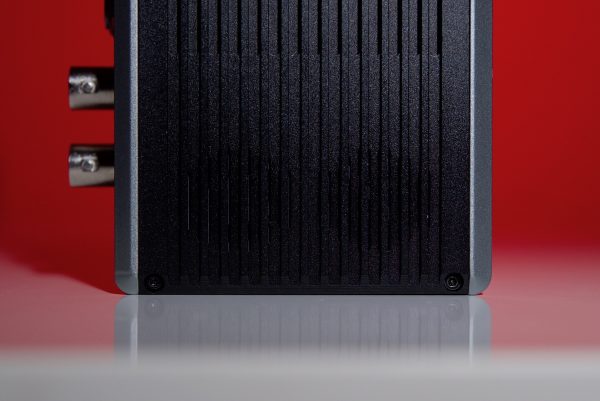
Both the transmitter and the receiver use fans to keep the units cool. the receiver fan is barely audible but the fan on the transmitter (there are actually two fans) are very loud. In the menu, there is an option to select the fan speed or select its strength manually. With the transmitter it didn’t seem to matter what setting I selected for the fan, it was always on and always loud. This would be a problem if you need to record audio close by the camera.
Two different versions
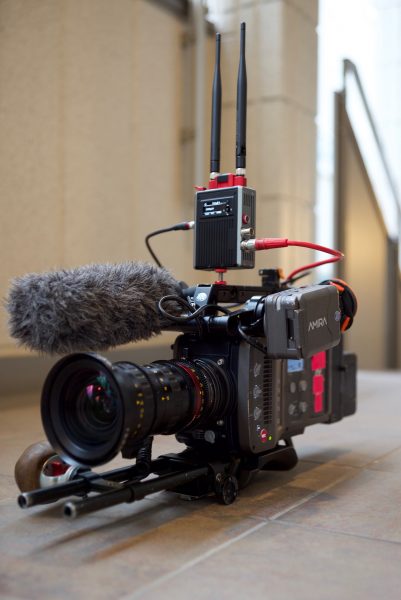
There are two DarkTower systems available, one with a 2000ft (609m) wireless video range and the other with a 3000ft (914m) range. Both DarkTower systems let you control FIZ (focus, iris & zoom), send wireless video, as well as control most mainstream cameras. Camera control is still to come, although if you use DarkTower in conjunction with Movcam’s MCS-1 FIZ hand controller you can control RED cameras. DarkTower wireless video transmission also supports metadata, time-code and record trigger. It will also wirelessly send lens data settings from compatible lenses. Whether you use the DT2000 (600m) or DT3000 (1000m) wireless transmitter card, you can simply use the same receiver. So if you wanted to upgrade from the DT2000 (600m) to the DT3000 (1000m) you don’t need to change the receiver, you just upgrade the transmitter. This makes upgrading a cheaper proposition.
No DFS
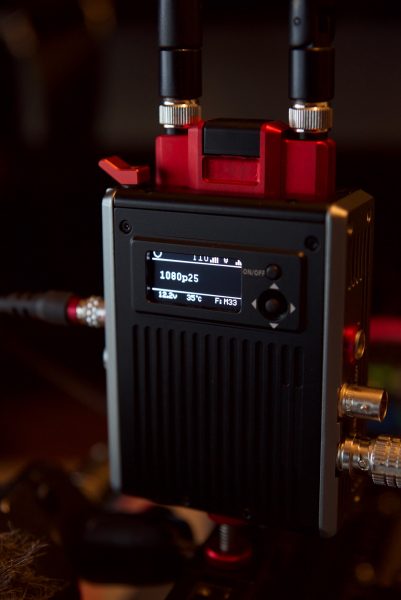
The DarkTower system doesn’t use DFS and you have to manually select what channel you are using. If you aren’t familiar with Dynamic Frequency Selection (DFS), it is compulsory for devices that operate on the 5Ghz band to prevent any interference with radar systems. It does this by detecting any frequency pulses during the channel selection process and moves its transmission to another channel if any pulses are detected.
I imagine the reason DarkTower doesn’t use DFS is that it is sending multiple wireless signals to a single receiver. With DarkTower you need to set both the wireless video and wireless lens control channels manually.
I couldn’t find out where Movcam is getting their chips from. All I could find out is that they are coming from a third party provider and not directly from Amimon.
Modules are not a new concept
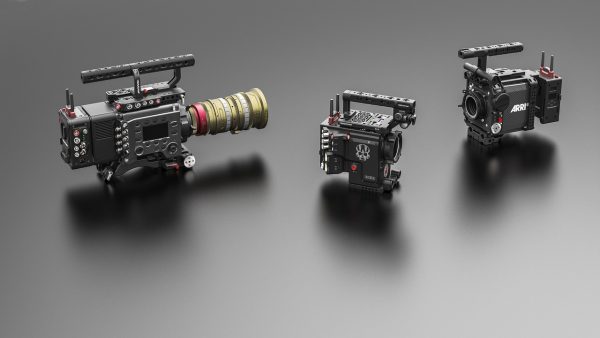
Making modules that can be attached to cameras isn’t a new idea, Off Hollywood has been making modules for RED cameras using a similar concept for quite some time. Just like other modules that are available, the DarkTower system is a clever take on simplifying the ever-increasing complexities of wirelessly controlling your camera, lens, and video transmission.
Set up and ease of use
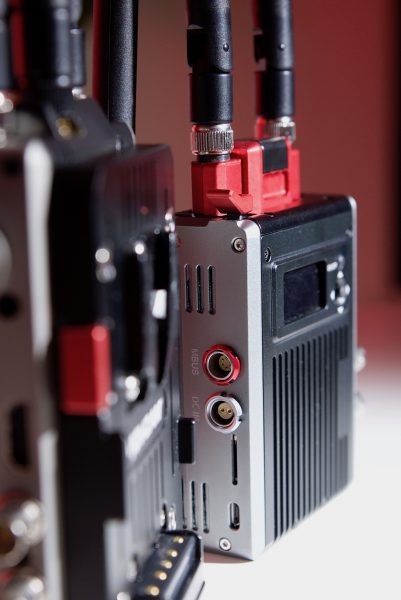
A good wireless video solution should be easy and fast to set up and get running. In all honesty, this shouldn’t be a difficult task, and if it is, then the product has already failed in my opinion.
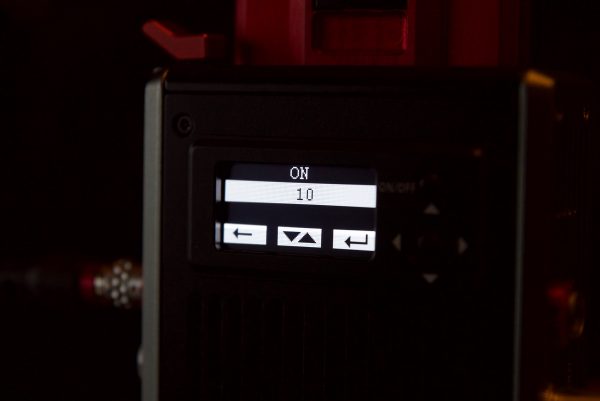
The DarkTower system is virtually almost plug and play. All you originally need to do is make sure both the receiver and the transmitter are on the same channel. Intelligent pairing on the receiving end and the transmitting end means you don’t need to pay attention to the wireless channel, as it can remember the last correctly matched channel at both ends. Once both units are paired they remember each other and I found that it didn’t matter how many times I turned them on or off they would always just connect back up straight away. This is how a wireless system should be, quick and easy to use. In addition, it is also possible to have one transmitter sending signals to 8 receivers simultaneously.
So far it’s all looking good, but I wanted to see what would happen if I lost connection, so I turned the receiver off and then back on again. It took roughly 5 seconds for the receiver to re-establish a connection which was nice and quick.
Next, I turned the transmitter off, which is more commonly what may happen when you change over a camera battery or power the camera off and then on again. This time it took around 5 seconds for the picture to re-establish.
What about if I pulled out the SDI from the camera? This time the system re-established connection in under 2 seconds.
So what would happen if I suddenly changed the frame rate to 60fps (still in a 23.98p recording mode) on my camera while the system was on? Absolutely nothing changed. I didn’t even lose the picture for a second. When I changed the camera back to 23.98fp, it took under 2 seconds for the picture to re-establish.
Now DarkTower is claimed to support up to 60p in full HD, so I decided to test that claim. Again this was no problem at all, and changing from 23.98p to 60p didn’t result in a loss of picture at all. Even when changing from 23.98fps to 200fps in HD, DarkTower maintained the picture without any drop.
In the final test, I wanted to change the operating channel and see what would happen. I changed the receiver to a different channel and then changed the transmitter to the same channel. Again in less than 3 seconds, I had a picture back.
I really tried hard to fault DarkTower with all these tests, and no matter what I did the system always re-established a connection without me needing to do anything. Not once did I have to reboot both the transmitter or receiver. This is a strong indication to me that the system is reliable and easy to use.
Real-world performance
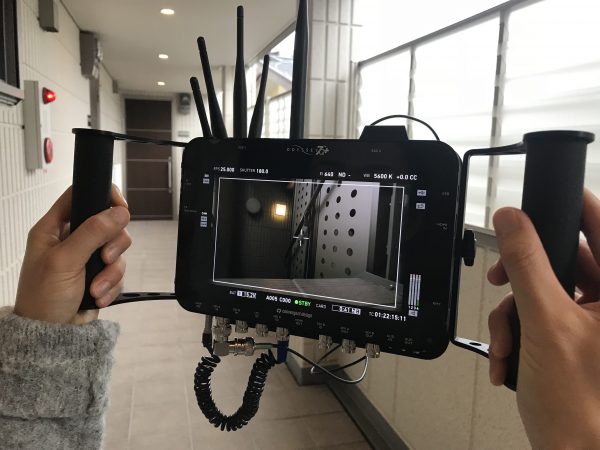
I used the DarkTower system on a recent commercial shoot and it was rock solid. Not once did I have a single connection issue, even when changing over batteries and powering the camera on and off. Once it is powered on it just connects up and lets you get on with what you are doing.
Wireless range and performance are always a hard aspect to test because it really depends on where you are using it. In one location it may work flawlessly and in another, you may run into problems.
To see what the range of the system was I set up a test where I could measure the exact distance at which the DarkTower would still get me a perfectly stable picture. I’m in the middle of Tokyo, so it’s usually a good indicator of how well a wireless system works given the amount of wi-fi traffic and interference in this city.
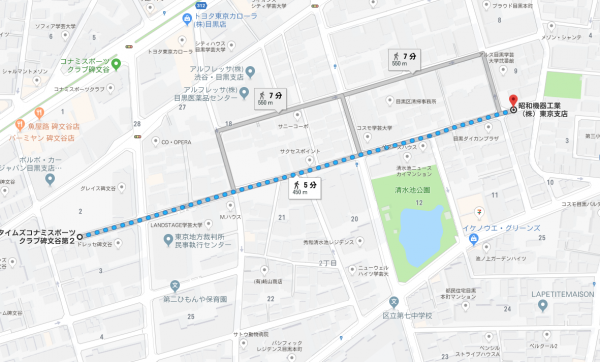
I found that I still had a good clean, stable signal up until around 450m (1476ft) from where the camera was as long as I maintained a line of sight. This figure was less than the 609m (2000ft) range that Movcam claim is the effective range of the DT2000. The range I got was still very impressive given the test took place in the middle of Tokyo where there is an awful lot of RF and WiFi traffic.
Once the DT2000 dropped the signal I found that it connected up again instantly once it came back into range. Not once did I have to turn the unit off and power it back up again. Anytime the signal dropped it was able to re-establish itself without me having to anything. I really liked this aspect of Dark tower as it allowed me to get on with shooting and not have to worry about having to worry about my wireless video system. Not once did I experience any noticeable latency.
Competition
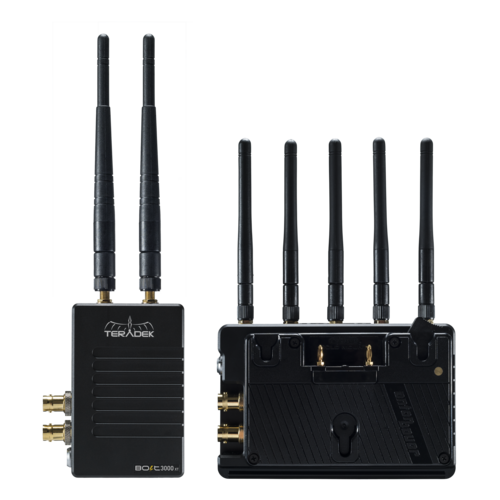
Teradek makes the Bolt 3000 XT SDI/HDMI Wireless TX/RX system that has a 3000′ (914.4m) range. This system retails for $10,190 USD, which is $3191 USD more than Movcam’s DarkTower DT3000 kit. Both the Teradek and Movcam offer vastly different forms of functionality.
Hollyland also has their Cosmo 3000P – 3000ft Wireless Video System, but the receiver is built into a panel array. That system costs $7500 USD.
Movcam’s DarkTower is certainly an impressive product, but it’s being aimed at the higher end of the market where Teradek has become almost the industry standard. It’s very hard to convince people who have already been using Teradek systems for such a long time to migrate across to another manufacturer. Productions are more likely to go with systems that are stocked by rental houses so they can easily get replacements very quickly if need be.
Prices
DT2000 $2,999 USD
DT3000 $3,999 USD
TX Dock $239 USD
RX $3,999 USD
DT 2000 Kit $5,999 USD
DT 3000 Kit $6,999 USD
Conclusion
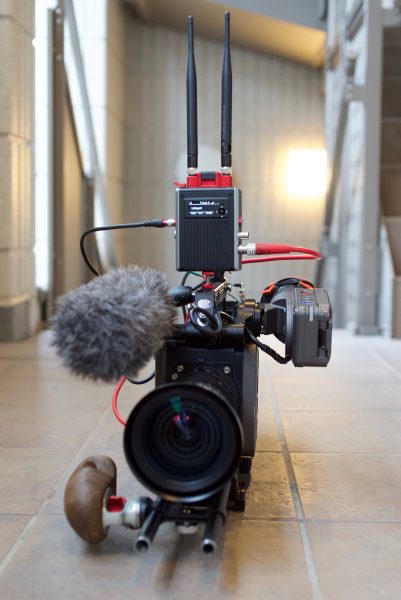
Long range wireless video systems are not cheap, and Movcam’s DarkTower is no exception. At $5,999 USD for the DT2000 Kit, and $6,999 USD for the DT3000 Kit, DarkTower is certainly being aimed at the higher end of the professional market. What you need to remember is that DarkTower is far more than just a wireless video transmission system. With the ability to act as a receiver for Movcam’s MCS-1 FIZ system as well as enable camera control through the use of different camera modules it really is a very versatile product. The only downside is that DarkTower can only work with Movcam’s own FIZ systems.
I like that DarkTower has been designed in a modular way. The ability to be able to take a wireless card out of one camera module and then drop it in another is great if you work with a variety of cameras. It also makes the system more appealing to rental houses.
The DarkTower system is reliable, robust, and most importantly, it provides high-quality wireless video over large distances. It’s easy to set up and use and it stays out of your way while you are shooting. My only concern is with the fan noise from the transmitter.

